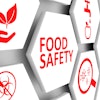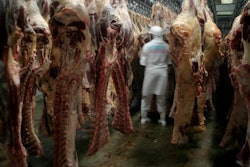
Salmonella, Typhimurium and Enteritidis. These are infections one rarely considers when eating out or purchasing groceries. Nevertheless, 2018 started with a fair share of illnesses tied to these food pathogens. Though the food industry in the United States continues to be revolutionized by the Food and Drug Administration’s (FDA) Food Safety Modernization Act (FSMA), companies continue to be challenged to improve processes, internal and supplier training, and traceability in a changing global environment.
As new FDA regulations roll out and proposed rules become final, the primary focus for all companies can be singularly defined as “prevention.” How does a company, in every step of food preparation, production and distribution, prevent a food safety issue from occurring when prevention is favored over corrective action? Regulatory compliance for food safety is mandated and necessary, though implementation is clearly challenging for even the best companies, as the smallest outbreak can negatively impact brand reputation and decrease customer loyalty.
Amber Road has compiled three industry best practices to help food and beverage companies align food safety, regulatory compliance and protect brand reputation.
1. Build sustainable prevention and quality culture through alignment with Lean Six Sigma. FSMA regulations aim at the prevention of food illness, with noted training, testing and operational efficiencies built into it. Yet, E.coli still happens. A Lean Six Sigma (LSS) approach can elevate a company’s program by supporting a sustainable quality culture where all employees, regardless of their role, are aligned to a common strategic goal and understand the path to attaining that goal.
The LSS approach requires a belief by all team members that perfection is possible. If employees do not fully appreciate, believe and work toward the goal of creating 100 percent contamination free food, there will always be a future recall, outbreak or severe food illness.
LSS reinforces FSMA rules by involving multiple tiers of the company, from new hires to senior management, in its process. This allows input from all levels of the organization in identified projects, and improves visibility to the senior management team on where they are today, versus where they hope to be in the future.
2. Develop continuous improvement with success metrics. Once a FSMA program is in place, a continuous improvement strategy will help employees focus on reducing tangible costs while preventing contamination in the production and distribution process. Identifying, managing and following up on clearly established metrics will improve operational efficiency and reduce costs without compromising on food quality. A well-defined mapping value stream will eliminate anomalies caused by human behavior.
A company’s focus should be on empowering employees to identify any process step undertaken that adds waste, which can be defined as any activity that adds cost or time to production but does not improve the final product. This includes rework as well. Catching a mistake downstream and discarding product for potential contamination is the right thing to do when necessary, though analysis of the root cause must result in a change to processes to limit or eliminate the possibility of it occurring again.
3. Get an “A” in auditing and automation. Timely information on your full production line, from the purchase and processing of raw materials to truly knowing your supply chain business partners is a must. Automation will support the timely sharing of information regarding your supply chain, and provide insight into the one-up, one-back tracking capabilities.
If your firm is the U.S. importer of record, knowing all of the players in the supply chain, from the farm or food processor, starts with identifying them, as well as their role in the processing of your purchase. Automation techniques to monitor the cooking process, such as temperature and cooking time, will reduce anomalies in the process and should be part of the overall mapping of the supply chain production process.
Combining this with ongoing and required auditing of key business partners will bring to light anomalies in the food production process and provide an escalation plan to achieve full compliance. Internal quality teams play a major role in this area and should be supplemented by controlled audits through qualified third party auditors.
Managing a fully successful food safety program under FSMA is like building a puzzle and putting all the pieces together for success. Developing a corporate strategy requires the alignment of goals and objectives, providing the necessary resources for deployment.
As corporate awareness grows, the move toward a sustainable culture of prevention must be built into the company’s DNA. This becomes achievable when all levels of the organization are engaged in the process of compliance with an eye toward milestones for building a quality infrastructure with an end goal of 100 percent compliance. The best place to begin is with an internal assessment of your “as is” and “should be” processes. This will indicate where faults and cracks exist, allowing you the opportunity to transform with a more complete program.
The strongest companies will pursue a path of continuous improvement, with empowered individuals who will protect the consumer and company brand through an institutionalized approach to coaching, metrics, quality gatekeepers and peer review.


















